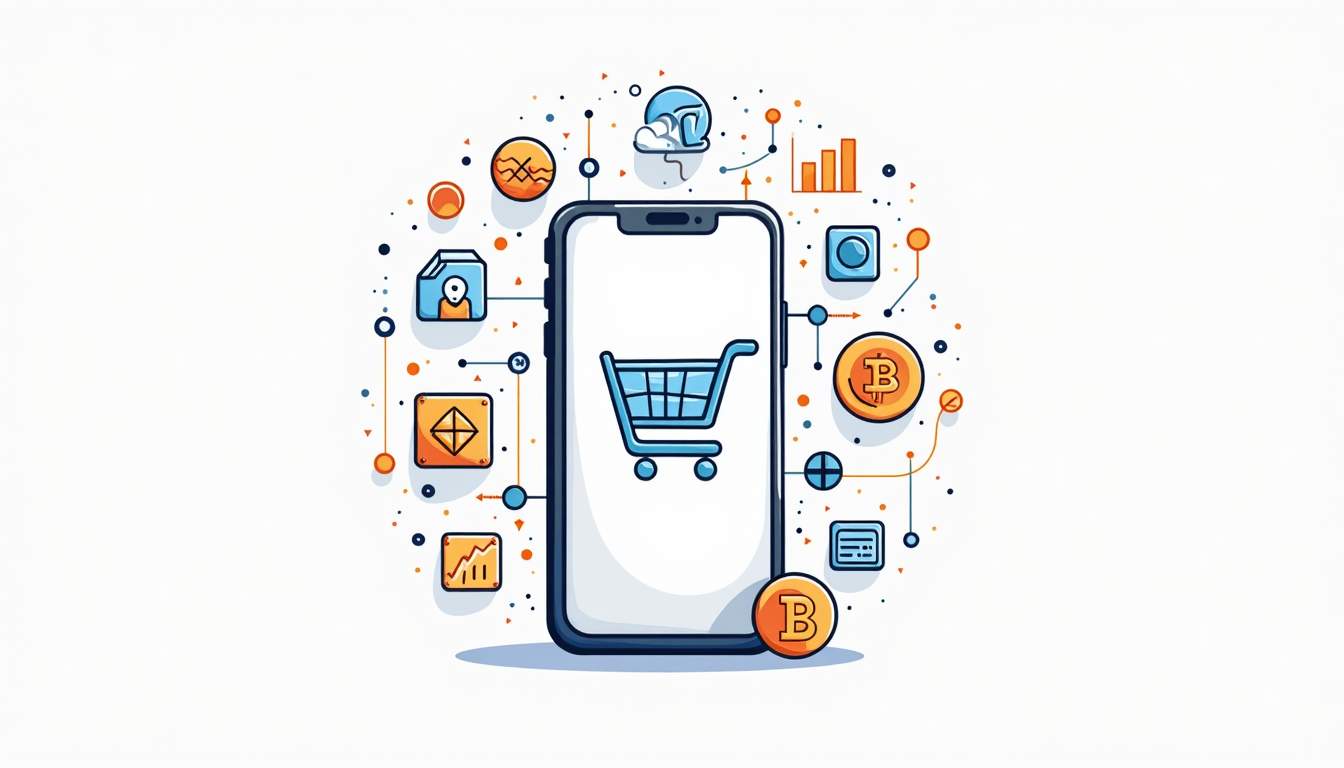The eCommerce market is booming, reshaping how people shop worldwide. Mobile commerce has become the primary touchpoint for consumers, offering convenience, personalized experiences, and seamless transactions. According to a 2024 Precedence Research study, global eCommerce sales exceeded $6 trillion, and the market is projected to reach $57.22 trillion by 2032, growing at a 15% CAGR.
For businesses, launching an eCommerce app is not optional: it’s a strategic investment. One of the most common questions is: how much will it cost to develop an app that can scale, engage users, and deliver ROI?
In this guide, we explore the full landscape of eCommerce app development costs, including:
- Typical cost ranges and complexity tiers
- Factors influencing development costs
- Hidden expenses often overlooked
- Step-by-step strategies for cost-effective app development
- Regional cost variations
- How Wednesday Solutions can help you build, iterate, and scale efficiently
- Technical considerations for scalability
- Case studies
Overview on eCommerce App Development Costs
So, how much does it cost to develop an eCommerce app?
A simple app can cost $25k, while an enterprise-grade app can exceed $200k.

Factors That Influence eCommerce App Development Costs
Feature Complexity
Every feature you add increases development time, testing effort, and long-term maintenance. Core features like shopping carts and payment gateways are essential, while AI recommendations, AR/VR, and multi-vendor support significantly raise complexity and costs.
Platform Choice: Native vs Cross-Platform
Development ApproachCost RangeDevelopment TimeProsConsNative iOS / AndroidHigh ($50k – $150k per platform)LongerBest performance, full access to device features, smoother UXSeparate codebases for each platform, higher cost, longer maintenanceCross-Platform (Flutter / React Native)Medium ($40k – $120k)FasterSingle codebase, faster iteration, lower initial costMay need native modules for complex features, potential performance trade-offs
Choosing the right approach depends on your budget, timeline, and required features. For rapid iteration and cost efficiency, cross-platform is often preferred, while native development is ideal for performance-critical apps.
Design and User Experience
High-quality UI/UX design improves engagement and conversion rates. Custom designs require wireframing, prototyping, and usability testing, which increase upfront costs but deliver long-term value.
Development Team Location and Expertise
Rates vary globally. North America and Western Europe are higher-cost, while Eastern Europe, Latin America, and Asia offer competitive pricing. Expertise and prior eCommerce experience are critical.
Backend Infrastructure and API Integration
A robust backend ensures scalability and performance, including:
- Cloud hosting vs on-premise
- API integrations for payments, shipping, analytics, and CRMs
- Database design for high-volume transactions
- Security and compliance infrastructure
Testing and Quality Assurance
QA ensures functionality, usability, performance, and security. Beta testing with real users helps fine-tune the app before launch.
Maintenance and Updates
Ongoing costs account for 15–20% of initial development per year for updates, bug fixes, and security patches.
Hidden Costs Often Overlooked
Many businesses underestimate expenses that can quietly inflate budgets:
- Regulatory Compliance and Security: GDPR, PCI DSS, and CCPA compliance require monitoring and updates.
- Infrastructure Scaling: Cloud servers, load balancing, and CDN usage can spike during peak traffic.
- Third-Party Integrations: APIs for payments, shipping, CRM, analytics, and AI recommendations can require licenses, subscriptions, and development effort.
- Marketing and User Acquisition: Ads, influencer campaigns, push notifications, and app store optimization are needed to attract and retain users.
- Ongoing QA and Testing: Continuous testing for new features and OS updates is required to maintain app quality.

Step-by-Step Strategies for Cost-Effective eCommerce App Development
Step 1: Define Your MVP
Start with core features: product catalog, checkout, and payment integration. Gather real user feedback before scaling features.
Step 2: Engage an Outcome-Based Agency & Look for Sprint Zero
Agencies offering Sprint Zero provide a 4-week pilot delivering:
- Product roadmap
- Scalable technical architecture
- UI/UX style guide
- Freemium tools for early traction
This allows you to evaluate the agency before committing to full-scale development.
Step 3: Adopt Modular Architecture
Separate components for catalog, accounts, analytics, and payments. Modular design enables phased development and easier maintenance.
Step 4: Use Cost-Efficient Frameworks
Cross-platform frameworks like Flutter or React Native save time while maintaining performance-critical native modules.
Step 5: Optimize Backend and Cloud Infrastructure
Leverage scalable cloud infrastructure, serverless architecture, and efficient APIs to minimize operational costs.
Step 6: Implement AI-Driven Product Engineering Sprints
AI-driven sprints accelerate prototyping, testing, and iteration based on predictive analytics and real user feedback.
Step 7: Automate Testing and Deployment
CI/CD pipelines enable fast, reliable releases, reducing post-launch bug-fixing costs.
Step 8: Budget for Ongoing Maintenance and Iteration
Regular updates and security patches keep the app competitive and secure.
Step 9: Integrate Analytics and Marketing Early
Track user behavior, test features, and adjust marketing spend to maximize ROI.
Development Costs by Region: Why Location Matters for Your Budget
After planning a cost-effective approach to development, one major factor that impacts your budget is where your development team is based. Labor rates, technical expertise, and infrastructure differ widely, meaning the same app can cost very differently depending on location.
Key Takeaways:
- US-based development offers reliability and experience but at a higher price.
- Eastern Europe provides a balance of quality, cost, and collaboration.
- India delivers exceptional value for startups and businesses aiming for fast, iterative development.
Many companies adopt a hybrid model, leveraging India for cost-efficient development while using nearshore or local teams for project management and QA.
How Wednesday Solutions Can Help You Build a Cost-Effective eCommerce App
Wednesday Solutions combines AI-driven product engineering, structured sprints, and outcome-based engagement to reduce costs while building high-quality apps.
AI-Powered Product Engineering Sprints
Our AI frameworks automate repetitive tasks, prioritize features, and accelerate iterations, reducing waste and speeding up time-to-market.
Sprint Zero: Low-Risk Validation
A 4-week pilot delivering:
- Product roadmap
- Scalable technical architecture
- UI/UX style guide
- Freemium tools to test traction
No long-term commitment, with tangible outcomes to evaluate before full-scale development.
High-Velocity Startup Playbook
A free 3-day email course showing how top founders leverage AI-driven sprints to test hypotheses faster, run 3x more experiments, and reach product-market fit before runway ends.
Real-World Results
- Reduce development cycles by up to 40%
- Faster iteration and user feedback loops
- Minimized development waste
- Proven success with funded startups
Founder-Trusted Approach
Rated 4.9/5 on Clutch, we bring experience, AI automation, and high-velocity engineering to help you scale confidently.
Technical Considerations for Scalable eCommerce Apps
- Cloud Infrastructure: AWS, GCP, or Azure with auto-scaling
- Database: PostgreSQL, MySQL, or MongoDB depending on needs
- Security: SSL/TLS, token-based authentication, PCI DSS compliance
- API Design: Modular REST or GraphQL APIs for flexibility
- Performance Monitoring: Analytics, A/B testing, error tracking, and load testing
Case Studies
Global Retailer Microservices Transition
A leading retailer moved from monolithic to microservices, scaling inventory, payments, and search independently. Deployment frequency increased by 70% and downtime decreased.
IoT-Enabled eCommerce Platform
A smart logistics platform integrated event-driven architecture to track warehouse stock and deliveries in real-time, cutting fulfillment delays by 40%.
AI-Powered Financial Tracking
A fintech eCommerce platform used AI tools to monitor transactions and predict bottlenecks, reducing manual audits by 50%.
Conclusion: Balancing Cost and Quality
The cost of building an eCommerce app ranges from $25,000 for a basic MVP to over $220,000 for enterprise solutions, influenced by features, platforms, team location, and hidden costs. Strategic planning, phased development, and leveraging AI-driven product engineering sprints can reduce expenses, accelerate time-to-market, and ensure a quality product.
By choosing the right partners and development model, businesses can scale efficiently, reach product-market fit faster, and capture the rapidly expanding global eCommerce market.
FAQs
Q: What is the minimum cost to build an eCommerce app?
A: Around $25,000 for a basic MVP with essential features like product listings, cart, and payments.
Q: How much do AI-powered features add to cost?
A: AI recommendations or personalization typically add $10k–$50k depending on complexity.
Q: Is cross-platform development cheaper than native?
A: Yes, it allows a single codebase for iOS and Android, reducing development time and costs.
Q: How can I test an agency before committing?
A: Look for Sprint Zero or outcome-based engagement programs, which deliver a roadmap, technical architecture, and prototype before full-scale investment.
Q: Why consider offshore development in India?
A: India offers cost-efficient, skilled teams, ideal for startups leveraging AI-driven product engineering sprints to iterate quickly and reduce budget strain.






